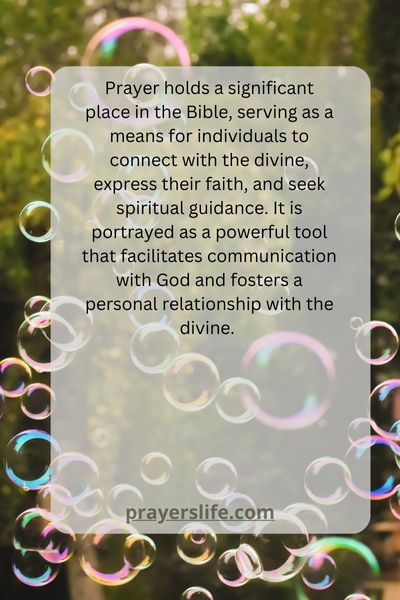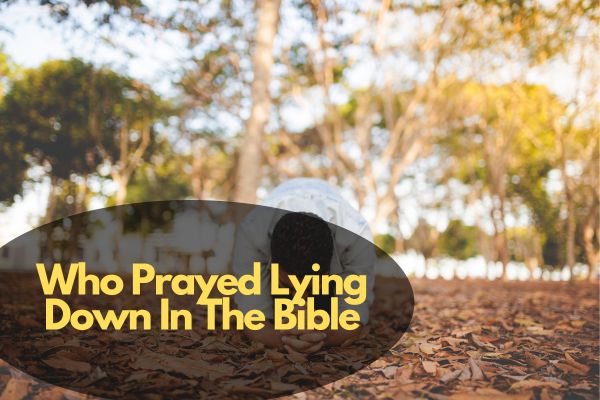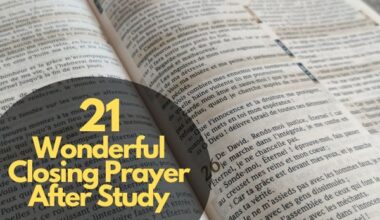Table of Contents Show
In the rich tapestry of biblical accounts, prayer stands as a cornerstone of faith and communion with the divine. Among the diverse ways in which prayer is depicted, the act of praying while lying down is a fascinating yet often overlooked practice found within the sacred scriptures.
This article aims to explore the instances where individuals, in their moments of deep spiritual connection, chose to approach the divine from a horizontal position. Through a comprehensive exploration of these instances, we seek to illuminate the significance and deeper implications of this unique prayer posture in the context of biblical narratives.
Who Prayed Lying Down In The Bible
Prayer is an integral aspect of various religious traditions, including Christianity. Among the diverse postures associated with prayer, lying down holds a significant place in biblical history. Exploring the instances of those who prayed lying down in the bible sheds light on the spiritual significance of this practice.
The act of lying down during prayer can be seen as a physical manifestation of humility and surrender, reflecting the believer’s complete trust in the divine. Several biblical figures, known for their profound faith and spiritual journeys, embraced this posture during their encounters with the divine
Significance of Prayer in the Bible
Prayer holds a significant place in the Bible, serving as a means for individuals to connect with the divine, express their faith, and seek spiritual guidance. It is portrayed as a powerful tool that facilitates communication with God and fosters a personal relationship with the divine. Throughout the Bible, various individuals have turned to prayer during times of distress, celebration, or uncertainty, showcasing the diverse forms and expressions of their faith.

Instances of Individuals Praying in the Bible
The Bible narrates the stories of numerous individuals who engaged in fervent prayer, often during pivotal moments in their lives.
From the heartfelt pleas of King David to the unwavering faith of Daniel in the lion’s den, these accounts highlight the profound impact of prayer on personal and collective experiences.
Elijah: In the Old Testament, after his confrontation with the prophets of Baal on Mount Carmel, Elijah found himself exhausted and distressed. In 1 Kings 19:4, it is recorded that he
“went a day’s journey into the wilderness and came and sat down under a broom tree. And he asked that he might die, saying, ‘It is enough; now, O Lord, take away my life, for I am no better than my fathers.”
In this moment of despair, Elijah lay down and prayed, seeking solace and direction from the Divine.
Jonah: The prophet Jonah, known for his reluctance to heed God’s call, experienced a profound spiritual crisis during his time inside the belly of a great fish. In Jonah 2:1-2, he prayed from the belly of the fish, saying,
“I called out to the Lord, out of my distress, and he answered me; out of the belly of Sheol I cried, and you heard my voice.”
Although the text does not explicitly state that Jonah was lying down, his confinement within the belly of the fish suggests a position that is not fully upright.

Jesus: In the New Testament, Jesus Himself prayed in various postures, including standing, kneeling, and lying down. One significant instance is recorded in the Garden of Gethsemane before His crucifixion, as mentioned in Matthew 26:39
“And going a little farther, he fell on his face and prayed, saying, ‘My Father, if it be possible, let this cup pass from me; nevertheless, not as I will, but as you will.”
Jesus’ posture of falling on his face demonstrates his profound humility and submission to the will of God in the face of immense suffering.
Exploring the Practice of Prayer
While the act of kneeling or standing during prayer is commonly depicted, the Bible also references instances where individuals prayed lying down. This alternative posture, although less conventional, offers a unique perspective on the intimate nature of prayer and the diverse ways in which people express their devotion. Examining the contexts and implications of these instances provides a deeper understanding of the spiritual dynamics at play within the act of prayer.

Biblical Figures Known to Have Prayed Lying Down
Several notable figures in the Bible are described as having prayed while lying down. One such instance is the story of King David, who, in moments of distress, turned to God while lying down, seeking solace and guidance. Additionally, the prophet Elijah’s encounter with despair led him to pray in a prostrate position, emphasizing the emotional intensity and vulnerability that can accompany this particular posture of prayer.

Debates and Interpretations Regarding Praying Positions
The topic of prayer positions, including the act of lying down during prayer, has sparked debates and diverse interpretations among theologians and scholars. While some emphasize the significance of physical posture as a reflection of inner spiritual disposition, others argue that the sincerity and intention behind the prayer hold greater importance than the physical posture adopted.

Theological Implications of Praying Lying Down
The act of praying lying down has theological implications that extend beyond the physical aspect of the posture. It reflects the depth of one’s trust and surrender to the divine, highlighting an intimate and profound connection with God. The theological significance of this posture emphasizes the spiritual state of humility, dependence, and submission before the divine presence.
Relevance of Posture in Contemporary Spiritual Practices
In contemporary spiritual practices, the significance of posture during prayer continues to be a topic of interest and exploration. While many adhere to traditional postures, others are open to adopting various positions that resonate with their personal spiritual experiences. The relevance of posture in modern-day prayer practices underscores the dynamic nature of spirituality and the importance of cultivating a genuine connection with the divine.
Conclusion
The diverse postures of prayer documented in the Bible serve as a testament to the multifaceted nature of spirituality and the various ways in which individuals seek to communicate with the divine. Whether kneeling, standing, or lying down, these postures reflect the depth of human emotion and faith, emphasizing the significance of personal experiences in the realm of spirituality.
Ultimately, the act of prayer remains a powerful and intimate means of connecting with the divine, transcending physical postures and encompassing the sincerity and devotion of the heart.
FAQs
1. Is it acceptable to pray lying down?
Prayer is a deeply personal experience, and the acceptability of praying lying down varies among different religious traditions and interpretations.
2. What does the Bible say about different postures during prayer?
While the Bible mentions various postures during prayer, it emphasizes the importance of genuine devotion and faith over physical positions.
3. How does the posture during prayer affect one’s spiritual experience?
Posture during prayer can impact an individual’s spiritual experience by influencing their focus, intention, and emotional connection with the divine.







